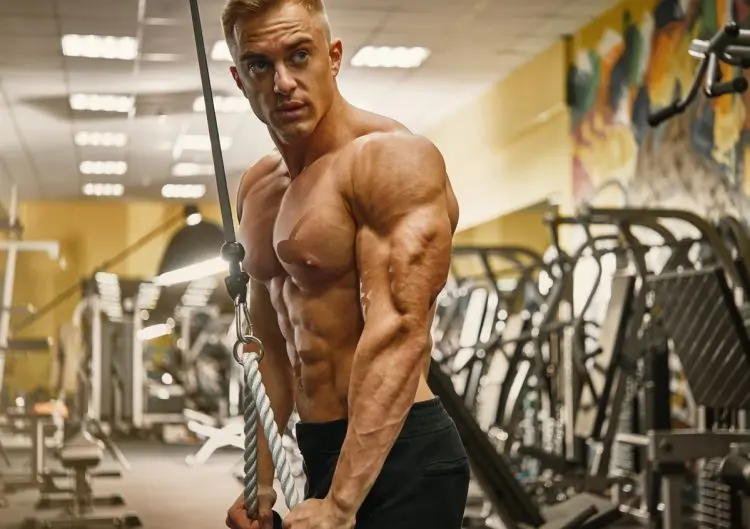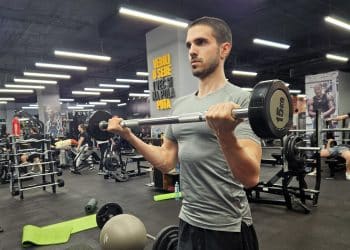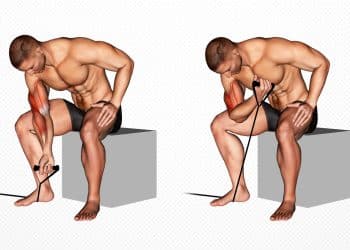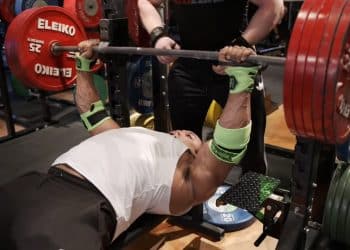You probably haven’t come across a single soul who’s ever said that they wished their arms were a little smaller or maybe their arms are big enough. Yeah, me neither.
Look around your gym and lifters left and right are pounding set after set of curls and triceps extensions. It seems like everyone and their grandfather wants to pack on more size to their arms. It’s no surprise. We all want to fill out those shirt sleeves. Arms are one of those body parts that act as billboards in public. An impressive set of arms are considered hallmarks of a great physique.
Of course, full body development is always the goal, but so many lifters are training their arms the wrong way. The reality is, it’s not all that complicated to build bigger upper body appendages. In fact, a few things described here may surprise you.
Arm function
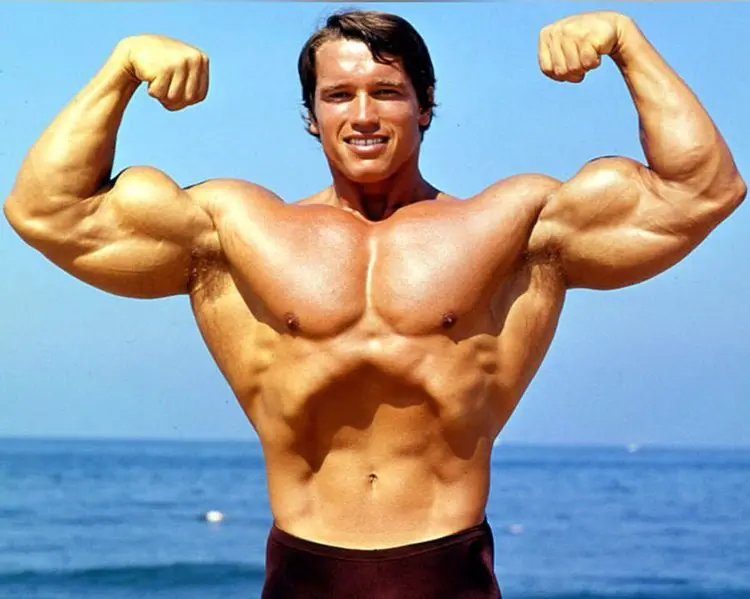
First, a brief rundown about what we’re dealing with here. The upper arm is a rather simple lever system. The biceps flex the arm – decreasing the arm angle at the elbow, while the triceps extend the arm – increasing the angle.
Different hand grips and upper arm positions at the shoulder will affect the biceps and triceps a bit differently, but flexion and extension are the two main functions for each muscle, respectively.
Complicating this fact is where many get into trouble, from overtraining, replicating movements, and adding too much ineffective fluff into their programs. Keeping things simple is the best starting point if your arms have been failing to grow as of late.
Level Up Your Fitness: Join our 💪 strong community in Fitness Volt Newsletter. Get daily inspiration, expert-backed workouts, nutrition tips, the latest in strength sports, and the support you need to reach your goals. Subscribe for free!
Why your arms aren’t growing
You may be the type who gets a good pump from your arm program. You may also try to cover all your bases regarding angles, volume, and rep ranges. You feel as though you’re doing all you can to get those guns larger, but alas, nothing changes.
You then begin to make excuses. You’re not genetically gifted to have big arms, you’re just not strong enough, or they’re as big as they’re going to get.
It might be time to give them a break and restart your approach. Here are a few things to consider while looking at your current program.
Too much volume:
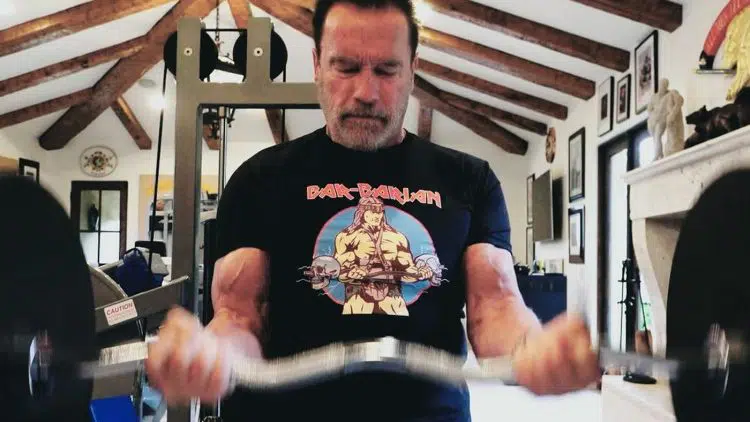
Flat out, you’re doing too many sets for arms. Both the biceps and triceps are relatively small muscle groups and also aid in many other lifts. Pummeling them into submission, forcing growth just won’t hack it. Additionally, after heaving pressing and pulling movements, your arms are most-likely exhausted.
Too many lifters perform 15, 20, or more sets for arms while only doing a handful for the lower body. Something’s just off about that. It might be time to reevaluate how you approach the number of sets you’re doing.
Too many angles:
Along with a hefty dose of volume, many will perform an overabundance of exercise angles. They fill up their arsenal with every known exercise for arms known to man. After all, each exercise has its own, unique quality right?
Yes, a tweak here or there can make a difference, but what you’re after right now is building slabs of muscle tissue to your upper arms. Avoid getting lost in the weeds and studying every nuance of arm training and taking advice from some influencer selling a program. Things are simpler than that.
Too much load:
Heaving up too much weight is another big roadblock to bigger arms. How, you say? I thought lifting big was the key to getting big..?
Yes, there is science to back up that load does matter when it comes to growing muscle tissue (hypertrophy), however, just like many other factors, this too can become misused and abused.
Attempting to arm curl a loaded barbell while bending backwards, a limited range of motion, and enough weight to keep you in the low single digits for reps isn’t going to grow anything. Sure, you may get a bit stronger in the process but it’s not an optimal way to coax your arms into getting any bigger.
Too much emphasis:
Lastly, you may be too focused. Yes, it sounds a bit convoluted, but bear with me. Sometimes we want things so badly in life that we get lost in the process. We overemphasize, overwork ourselves, and stress out to a severe extent. We end up tired, burned out, and become incredibly unmotivated.
Again, our upper arms are made up of relatively small muscle groups. Placing so much stress on them every week can lead us to overtraining and stagnation. We take one step forward and two steps back.
How to really get bigger arms
So, we’ve ditched the rocket science mindset and have identified a few things you could be doing wrong. Let’s now look at how we can fix things and finally come up with a simple game plan to get those arms growing again.
Principles for bigger arms:
Think about overall volume
At the risk of beating a dead horse, the arms are relatively small compared to your thighs and back. Why would your biceps need as many sets as your quads? Seems a bit excessive.
A good rule of thumb is to limit the number of sets for both biceps and triceps. The best approach is to start with the minimum number and slowly go from there. To start, choose one exercise and perform four sets. Be sure it’s an exercise that will enable you to use a significant amount of weight. Think barbell curls instead of concentration curls, for example.
After some time increase the number of exercises to two but be sure they are different enough to avoid redundancy. More on that in a bit. Drop the sets to three per exercise. Over time, once more, you can increase them back up to four sets each.
Level Up Your Fitness: Join our 💪 strong community in Fitness Volt Newsletter. Get daily inspiration, expert-backed workouts, nutrition tips, the latest in strength sports, and the support you need to reach your goals. Subscribe for free!
Stress the big lifts
Be sure to include the bigger lifts for both biceps and triceps. A short list may contain barbell curls, dumbbell curls, lying barbell triceps extensions, triceps dips, and close-grip bench presses. These, in particular, stress the most muscle fibers at once and utilize heavier loads than other, more isolation exercises.
This is where you need to be aware to stop adding smaller, fluff exercises in hopes to etch in detail. Arnold once said, “You can’t carve a pebble.” You must first build a big, solid piece or granite. Worry about chiseling down later.
There will be room for a few other exercises later, but for now focus on the ones that have the most bang for their buck so you’re not wasting time.
Manage frequency
Traditionally, many lifters follow the one-body-part-per-day dogma which means arms get their own day. With a massive dose of volume your arms may very well need an entire week to recover, however, that plan hasn’t been working.
Increasing your frequency is another easy way to stimulate new growth without the fancy exercises or executions. If you’ve been training arms once per week, increasing them to twice per week will be a literal 100% increase in stimulation. And since you’ve decreased the overall volume, it won’t require so much time between workouts to recover.
More frequent stimulation equals more frequent opportunities for growth. You instantly increase the process of breakdown, recovery, and rebuilding.
Be mindful of angles
As touched on earlier, too many redundant angles is just plain, well redundant. If you’re performing one similar movement after another, you’re not getting everything out of your exercise choices. If you get to the point where you’re about to add another angle make sure you choose another angle different enough from the first. This will ensure you’ll stimulate the area in a new way.
For example, the barbell curl hits the meat of the biceps. It neither extremely stretches nor peak contracts the biceps. Adding in an incline bench dumbbell curl (stretch) or Scott curl (peak contraction) will do the trick. Think similarly for triceps. An example may include overhead rope extension (for stretch) or V-bar press down (for peak contraction).
Moderate your load
Finally, you’ll need to bury your ego and lighten your load. The key for real arm development is to take into consideration all of the heavy work that they’ve already endured from heavy pressing and pulling. Subjecting them to more ultra heavy loads will only bury them further into overtraining and possible injury.
Keep the weight and reps moderate. Arm training is much more nuanced than the bigger movements such as squats and deadlifts. Especially if you’ve been experiencing difficulty in connecting with certain exercises you’ll need to slow down the speed, pay very close attention to form, and think about mastering a specific weight before moving up.
A range of 10 to 15 is a great way to induce a new stimulus and begin to increase that mind to muscle connection.
Related: Grecian Ideal Calculator
Sample programs
What’s an arm article without a sample program to put to instant use? Below you’ll see a step approach to a sample arm training program. Yes, it’s simple but extremely effective especially if you’re not seeing results with what you’re currently doing.
Start slow. Plan to stay in each phase for four weeks before moving up. After four weeks, either take a week off from training arms or reduce the frequency to only one arm workout for the week and avoid going to failure on any sets. This will act as a rest week for your arms before moving to more volume and work.
Train your arms twice per week with at least three days between workouts while alternating the two workouts. Remember, use the minimum amount of work to stimulate growth. Your arms take on a ton of stress from other exercises so it won’t take much to get them to grow again.
Step 1
Workout 1:
- Barbell curl 4 x 10-15
- Lying barbell triceps extension 4 x 10-15
Workout 2:
- Seated dumbbell curl 4 x 10-15
- Close-grip bench press 4 x 10-15
Step 2
Workout 1:
- Barbell curl 3 x 10-15
- Incline dumbbell curl 3 x 10-15
- Lying barbell triceps extension 3 x 10-15
- V-bar cable press down 3 x 10-15
Workout 2:
- Seated dumbbell curl 3 x 10-15
- Reverse grip barbell curl 3 x 10-15
- Overhead triceps rope pull 3 x 10-15
- Parallel triceps dip 3 x 10-15
Step 3
Workout 1:
- Barbell curl 4 x 10-15
- Incline dumbbell curl 4 x 10-15
- Lying barbell triceps extension 4 x 10-15
- V-bar cable press down 4 x 10-15
Workout 2:
- Seated dumbbell curl 4 x 10-15
- Reverse grip barbell curl 4 x 10-15
- Overhead triceps rope pull 4 x 10-15
- Parallel triceps dip 4 x 10-15
Read more on how to get bigger arms:
- Bicep Curl vs. Hammer Curl
- How to Stretch Biceps for Maximum Development
- The 12 Best Biceps Exercises
- Best Old-School Bicep Workouts
- Old-School Methods to Grow Your Biceps
- Best Biceps Exercises
- Simple Old-School Methods To Grow Your Biceps
- Short Head Biceps Exercises For Bigger Upper Arms
- Long Head Biceps Exercises for Bigger Arms and Peak
In closing
Whether you’re a seasoned veteran or a newbie on the physique building scene everyone can use a do-over every now and again and get back to basics.
Don’t let overtraining and overstressing ruin your path to bigger arms. Take a step back so you can finally take several steps forward and finally fill out those sleeves.



